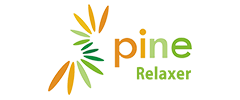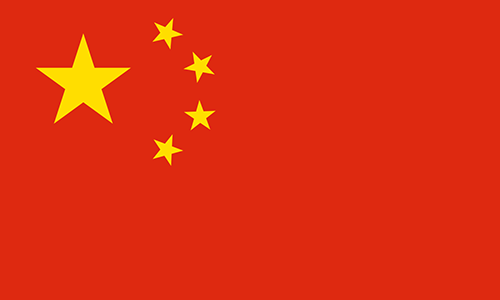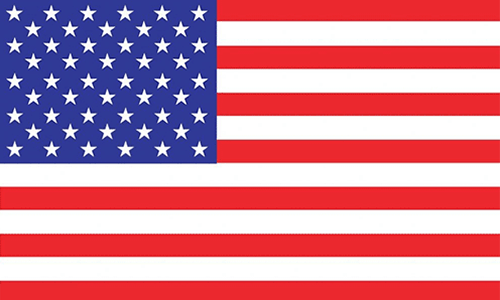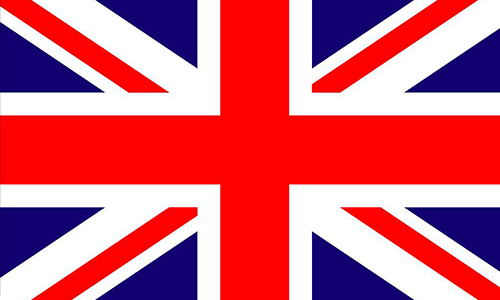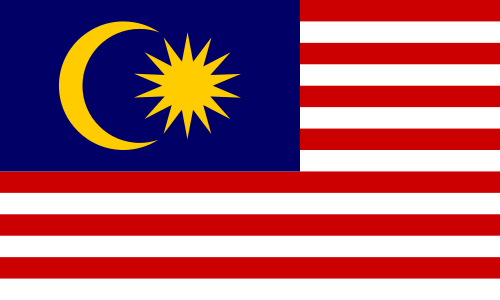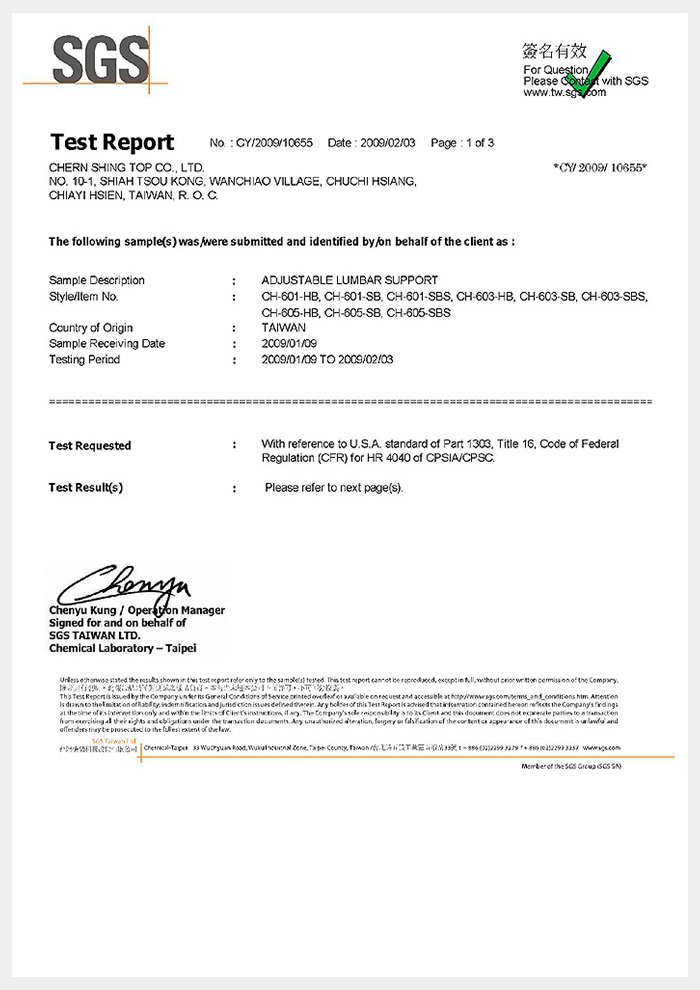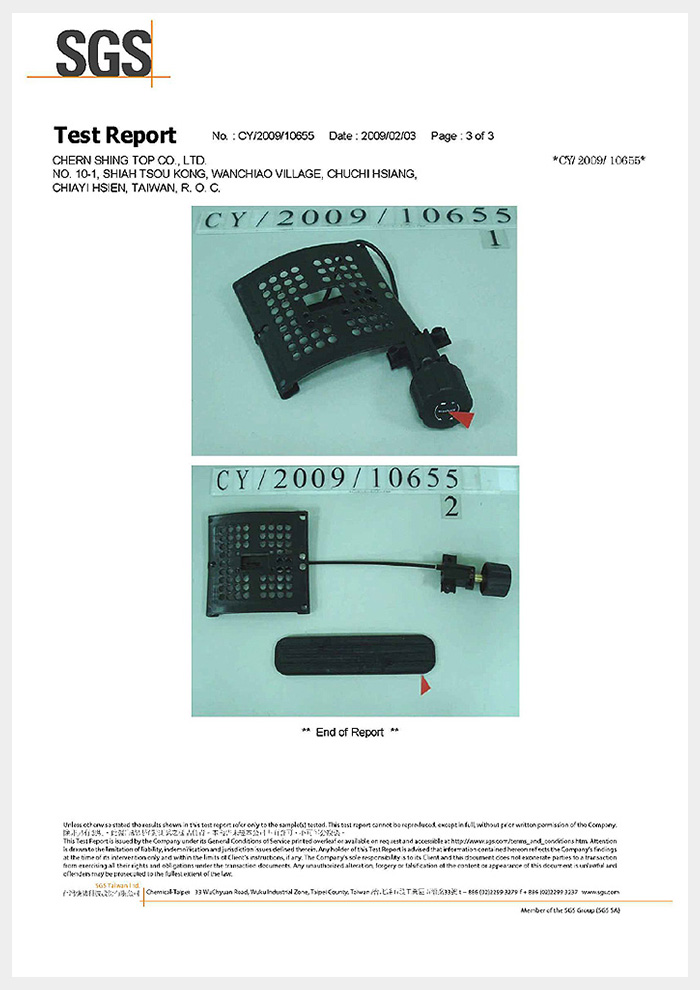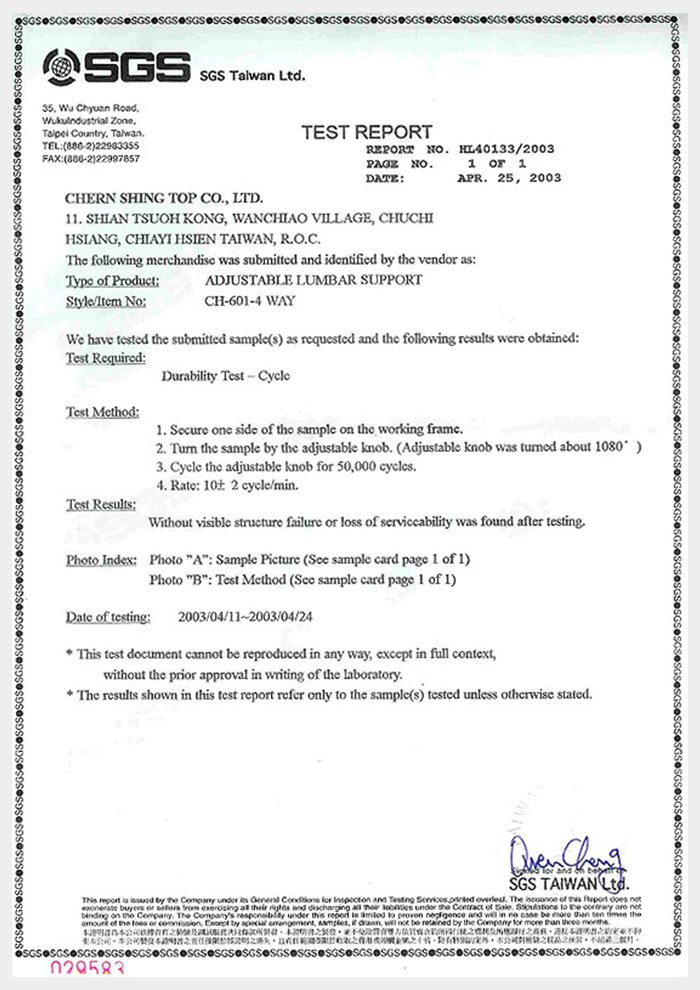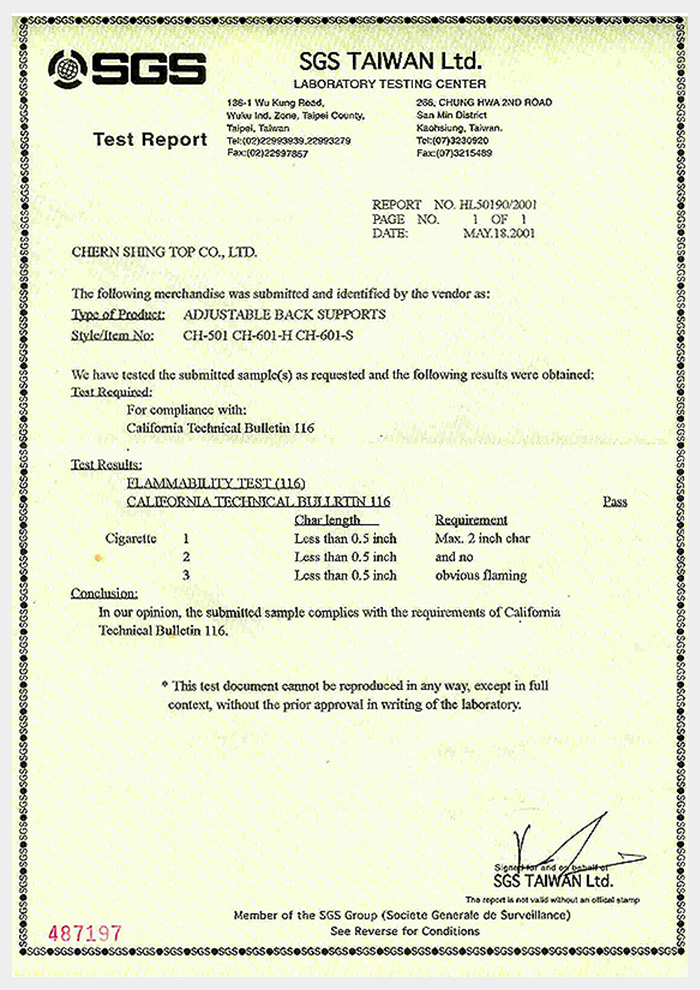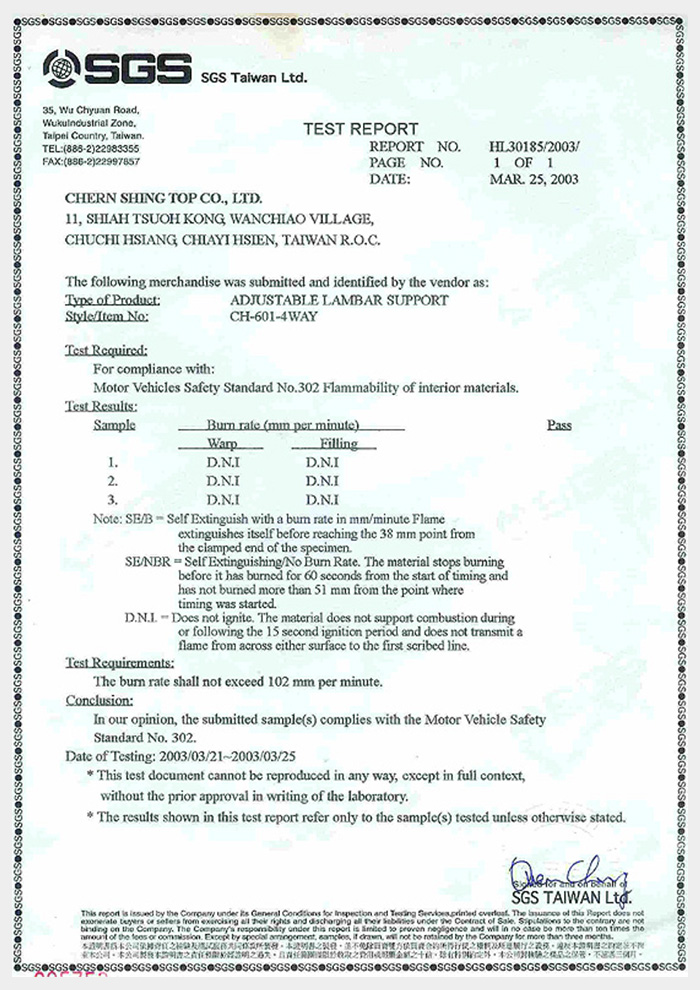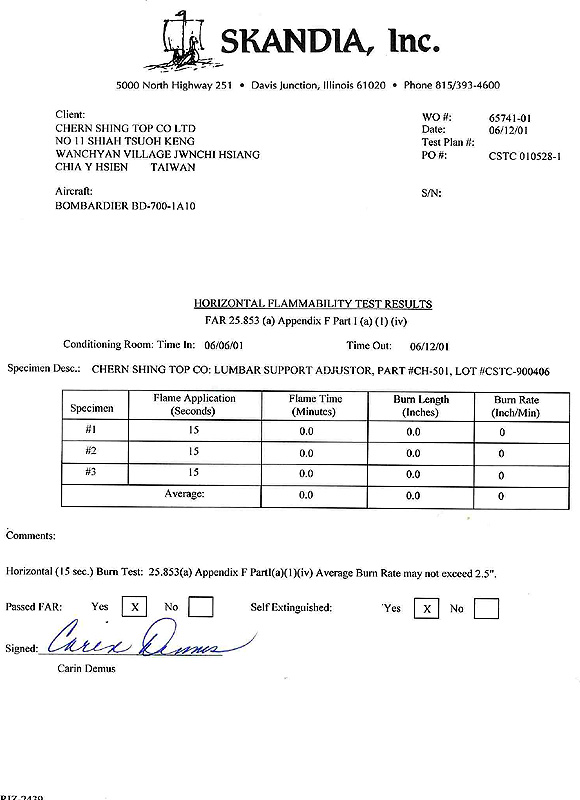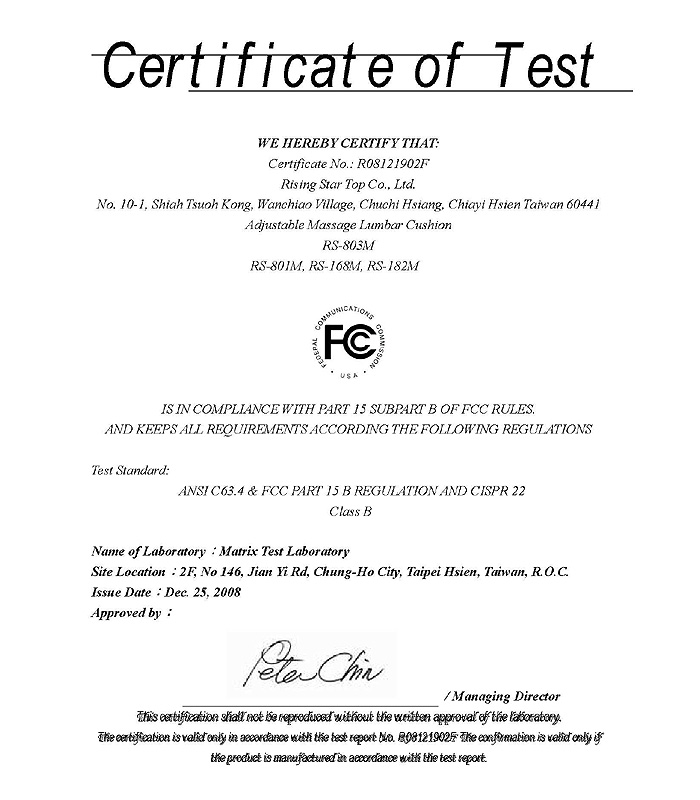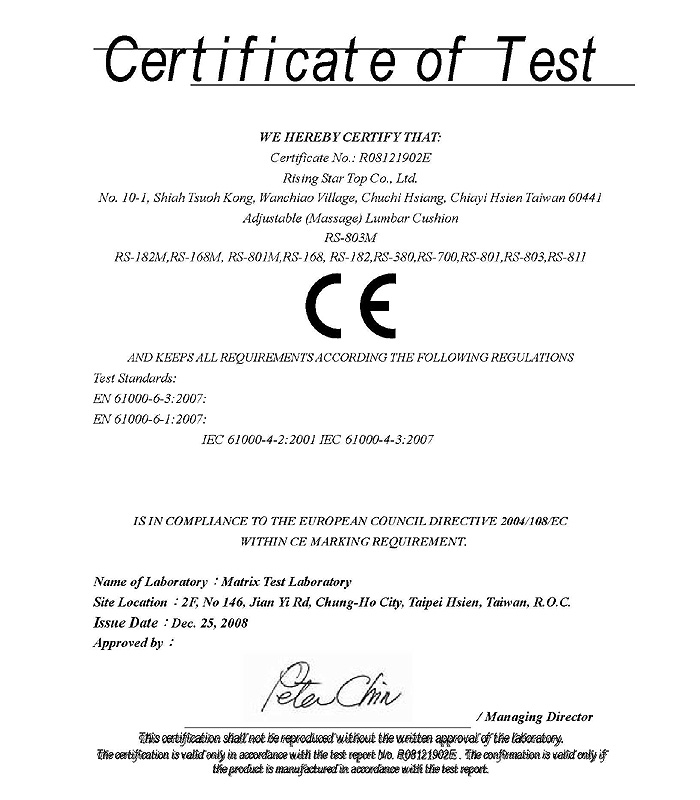Certifications
Our products are original and made of the best materials.
China
Patent Application No:
200920007870.6201020002841.3
201020003693.7
200820113990.X
U.S.A
Patent Application No:
11/83484611/168687
12/938505
12/366723
10/871779
Taiwan
Patent Application No:
M381354Germany
Patent Application No:
10165905.0-DE202008008780
Japan
Patent Application No:
2014-005148U.K.
Patent Application No:
0013188.810165905.0-GB
Malaysia
Patent Application No:
PI20003653Australia
Patent Application No:
2006203467Test Resport
1. Product Name: Adjustable Lumbar Support.
2. Company Name: Rising Star Top Co., Ltd.
3. Test Date:
March 1, 2008 to March 31, 2008 Subjects of the test: 15 males at the average ages of 25, average weight is 73.6 kgs. Test Unit: The Innovation Incubation Center of National University of Tainan, Taiwan.
4. Test method:
A load cell, a stress measurement system, and X-ray photographing system were employed to compare the loads, stress distribution, and the curvature on the lumbar spine when a person is sitting on memory foam lumbar support and adjustable lumbar support. During the testing process, three sets of load cells and stress measurement system were installed on sitting surface, and back support, respectively, to measure the loads and stress distributions on the areas of thigh, ischium, and back areas. In the end, X-ray photography was used to take the curvature of lumbar spine when using memory foam lumbar support and adjustable lumbar support.
5. Test results:
When using memory foam lumbar support the load distribution on the areas of thigh, ischium, and back were 23.19kgs, 15.22kgs, and 18.83kgs. In terms of stress, the maximum stress on ischium, and back were 0.255kgs/cm2 and 0.104kgs/cm2, respectively. For the adjustable lumbar support, the loads on the areas of thigh, ischium, and back were 34.79kgs, 8.54kgs, and 19.76kgs, respectively. The maximum stress on ischium and back were 0.185kgs/cm2 and 0.166kgs/cm2 areas. Regarding the curvature of lumbar spine, it appeared to be flat when using memory sponge lumbar support. On the contrary, the curvature of lumbar spine remained a lordosis curve more closing to the curvature when standing.
6. Conclusion:
According to the test results, the loads on ischium area was significantly less on adjustable lumbar support than on memory foam lumbar support. Part of the load has shifted to thigh and back areas, and the stress concentration on ischium area was significantly improved. Regarding the curvature of lumbar spine, lordosis is more obvious on adjustable lumbar support than on memory sponge lumbar support.
7. Test director:
Kuen-Horng Tsai, Ph.D.,Chief of Innovation Incubation Center; Professor, Institute of System Engineering, National University of Tainan, Taiwan

SGS Taiwan
Assorted
Chern Shing Top Co., Ltd. & Rising Star Top Co., Ltd.
No. 10-1, Xiacuokeng, Wan Bridge, Zhuqi Township, Chiayi County 60441, Taiwan
Business Development Executive
Erica Lo
+886-5- 2792911
+886-5- 2792011
rstc.ltd
2735278946
